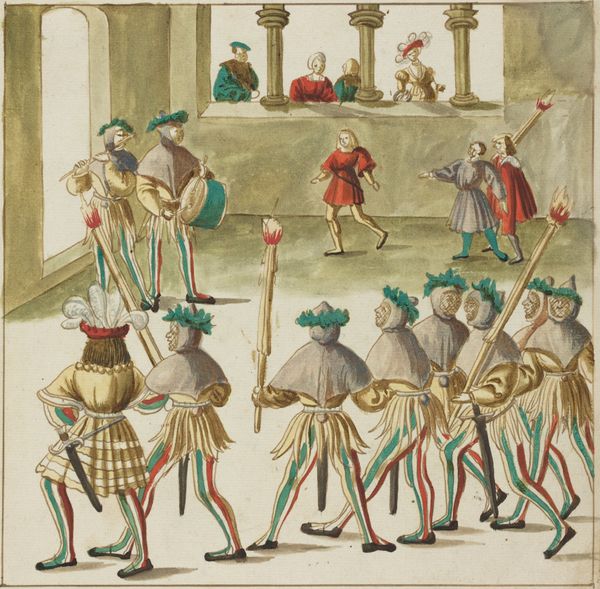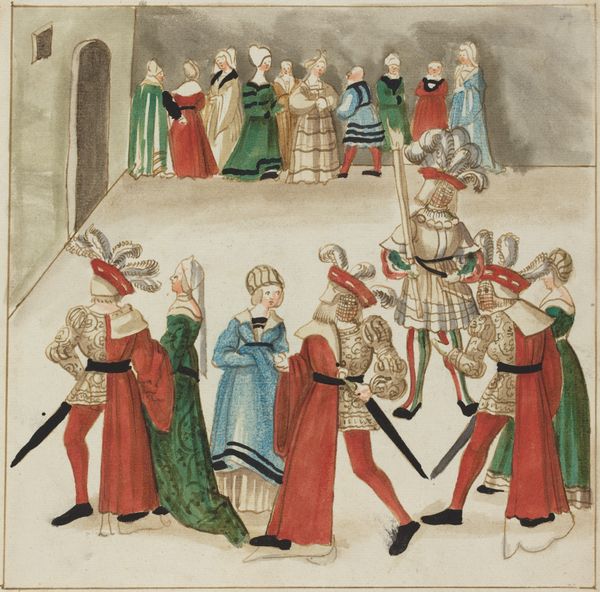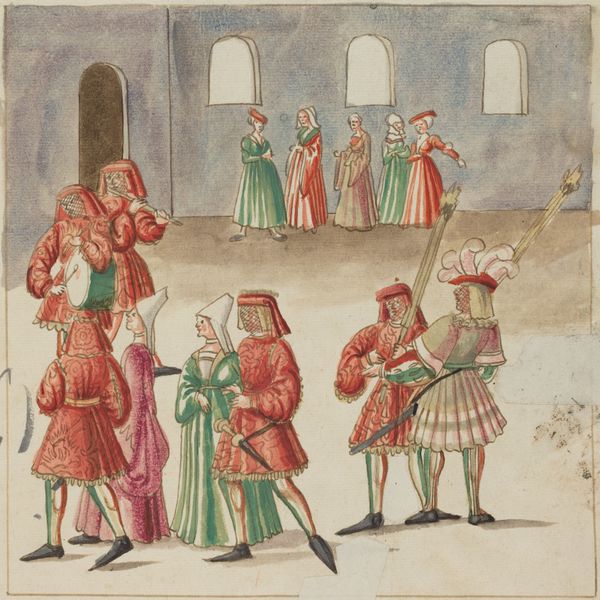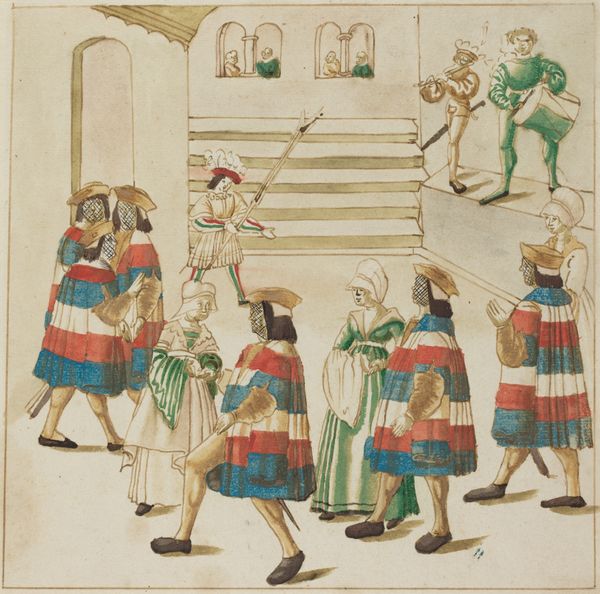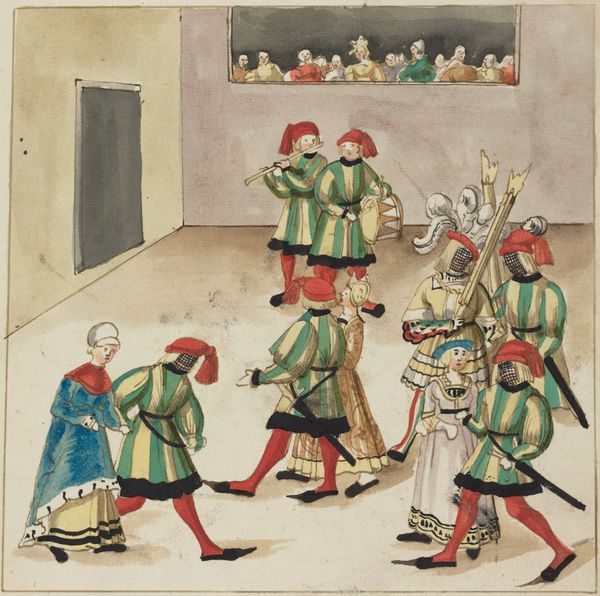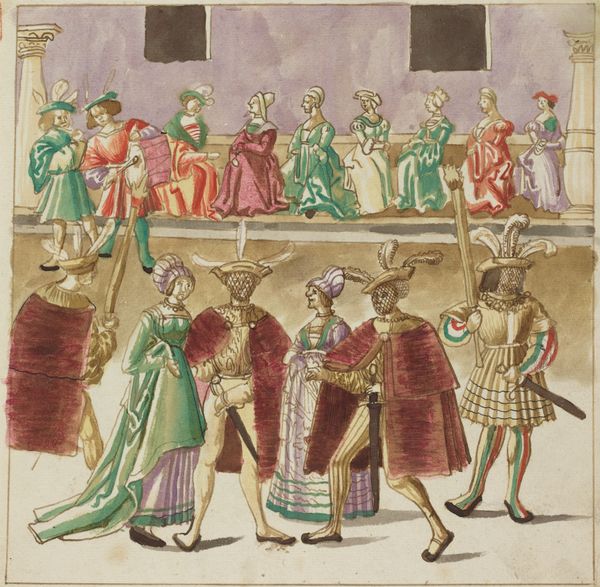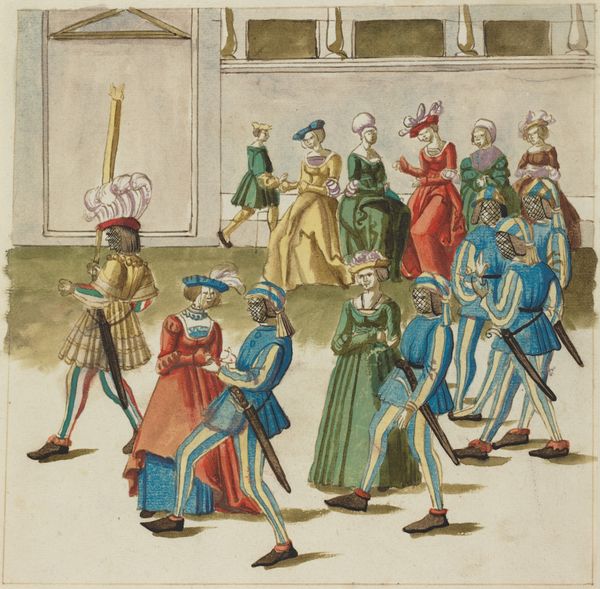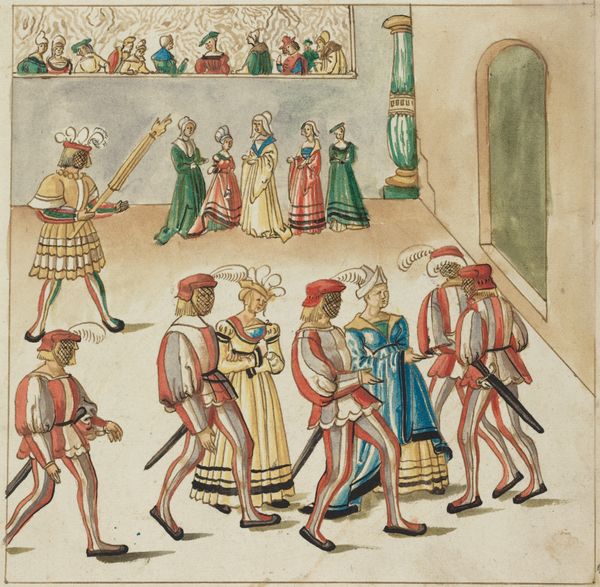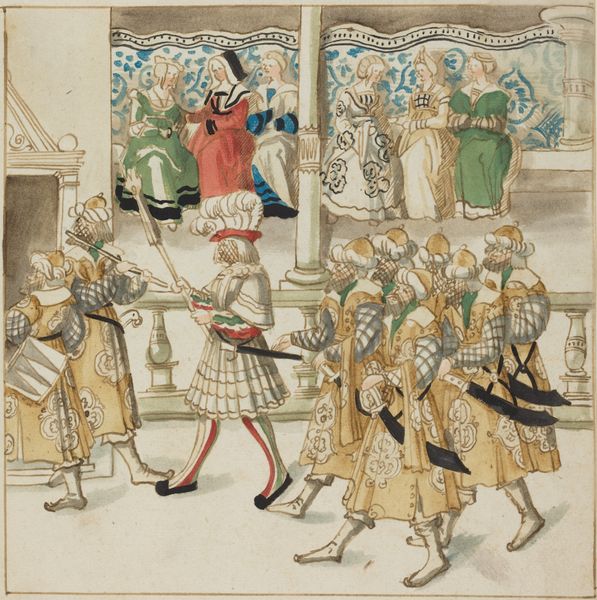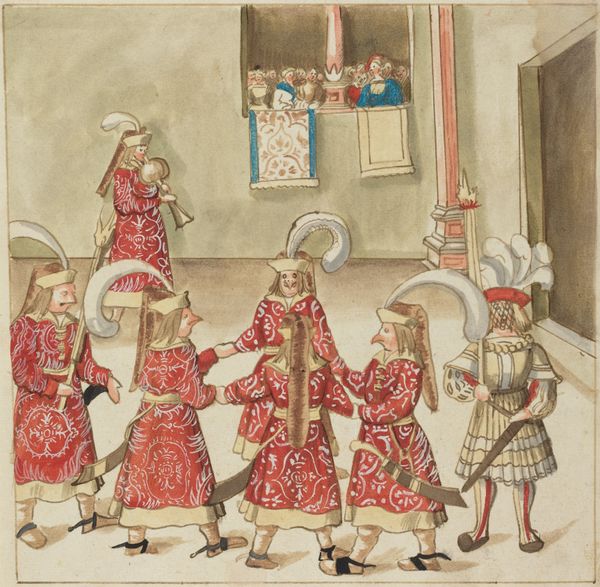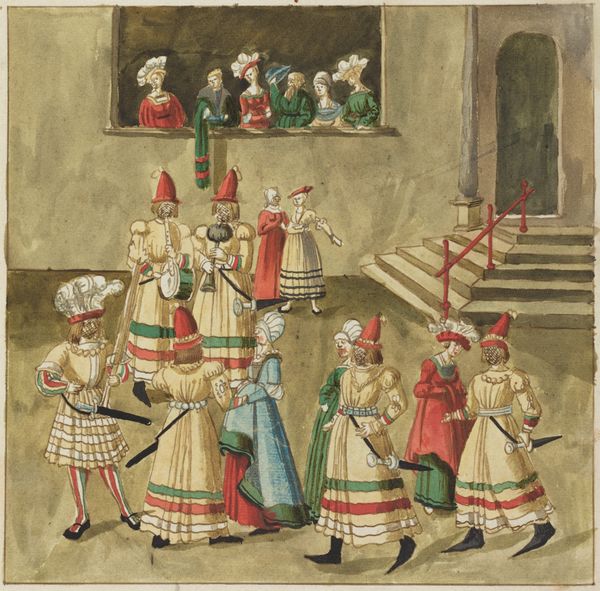
drawing, watercolor
#
drawing
#
figuration
#
watercolor
#
coloured pencil
#
genre-painting
#
italian-renaissance
#
miniature
Dimensions: image: 23 cm (9 1/16 in.) sheet: 34 x 26.3 cm (13 3/8 x 10 3/8 in.)
Copyright: National Gallery of Art: CC0 1.0
Curator: What an intriguing scene. This watercolor and ink drawing, aptly titled "Seven Men in Red Gathered in a Circle," dates from about 1512 to 1515 and is rendered anonymously, though likely originating from the Italian Renaissance. Immediately, I'm struck by the somewhat chaotic but strangely harmonic composition. Editor: Harmonic chaos is spot on. Look at the details here, though. It's not just a painted scene; it’s about labor. These materials—ink, watercolor, and the support it's painted on—represent a whole network of makers, sellers, and patrons who brought this object into being. Curator: Precisely, yet the beauty transcends mere function. Observe how the circle dominates the frame; it encloses these figures in a self-contained unit. There’s a deliberate flattening of the space, pushing the forms towards the picture plane and heightening the design's visual impact. The eye travels without pause, never given the depth to escape the design itself. Editor: I agree there is a beauty to the forms, but let’s consider the materials. Watercolor was so much a portable, convenient choice. And how does this feed into larger structures of production? A drawing like this highlights the division of labor – artists grinding pigments, preparing the support and so on. The cost of pigments and labor reflects Renaissance economics. Curator: Yes, these aspects are interwoven; consider the symbolic resonance created by the carefully chosen color. The repeated, vibrant red of the costumes commands attention; a concentrated form with sharp delineations. The red against the pale skin and the contrasting, if limited, hues used to distinguish the onlookers serve as a visual language that draws the eye deeper into the social order depicted. The costumes dictate an exclusive belonging within the performance and a stark social delineation between performers and audience. Editor: Red dye itself was valuable. These social stratifications in materials use denote a consumer culture during the Renaissance. Look, the figures depicted and the object itself both participate in Renaissance consumption, and this scene captures more than an exclusive social strata, but displays the labor inherent in its production. Curator: A perspective quite necessary in today's climate. Looking closely, a clear intersection unfolds. It is undeniable that within art exists a complex interplay of creation, and a space of pure aesthetic achievement. Editor: Absolutely, and it's essential that we understand both dimensions to grasp the comprehensive legacy of art. It's in looking at these networks that we start to consider artworks not simply as aesthetic objects, but material manifestations of societal structure.
Comments
No comments
Be the first to comment and join the conversation on the ultimate creative platform.
